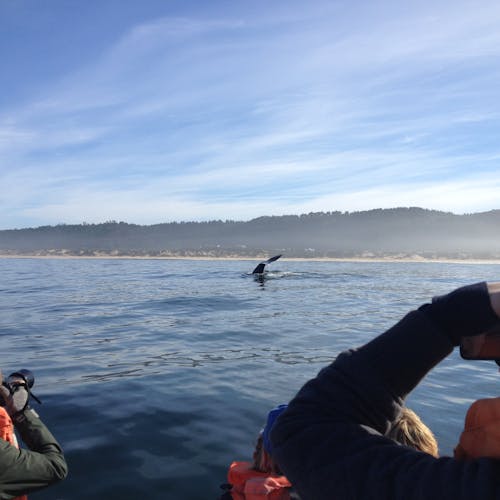
Volunteers needed to find the world’s largest toothed animal
I have the largest brain of any animal, I can reach up to 20.5 metres in length and have a head that is one-third the length of my body… what am I?
I am the elusive Sperm whale and my name comes from the milky-white waxy substance, called spermaceti, which is found in my head.
Are you looking for adventure? We need you!
Volunteers on the Mauritius Dolphin Conservation Project have been looking for the ever-elusive sperm whales, which inhabit Mauritian waters. As part of a research programme, you will work to protect cetaceans from the rapidly growing tourist industry.
In recent times observations of up to 50 boats pursuing a mother whale and her calf have been recorded. The funding required for Marine Biologists to collect essential data to develop legislation and regulate the industry depends on volunteers who work hands-on as research assistants.
News from the field
It had been three months since the last sighting and the team were anxious as to why they hadn’t had any sperm whale sightings which are usually frequent around this time of year.
After being out on the sea for 30 minutes they encountered their first glimpse of a whale, the melon-headed whale. To their relief, it was then on the way back to La Preneuse that they finally saw the great sperm whale, a group of around 15 were travelling along with their calves. The team were thrilled.
Why do we need to record sightings?
The use of volunteers to identify and record individuals during sightings is crucial if we understand how these animals’ movements, populations and behaviours are changing over time. Nobody quite yet understands what impact the huge increase in motorboat traffic has on cetaceans.
In addition to the harassment, these animals use echolocation to communicate and locate their prey. Dolphins (and other toothed whales) can produce high-pitched clicks. When these clicks hit an object, some of the sounds will echo back to the sender. By listening to the echo and interpreting the time it took before the echo came back, the dolphin estimates the distance of the object.
With motor boats adding a huge amount of noise pollution to coastal waters, it isn’t clear just what impact this may be having on their feeding behaviour. Furthermore, just yesterday a study published in the Journal of Experimental Marine Biology and Ecology revealed for the first time that turbulence generated by speeding motorboats kills significant numbers of zooplankton, the food for many filter-feeding cetaceans and a critical link between phytoplankton and fish in aquatic food webs.
Regions with high boat traffic exhibited a higher occurrence of copepod carcasses...This could have a number of important impacts within aquatic systems.
